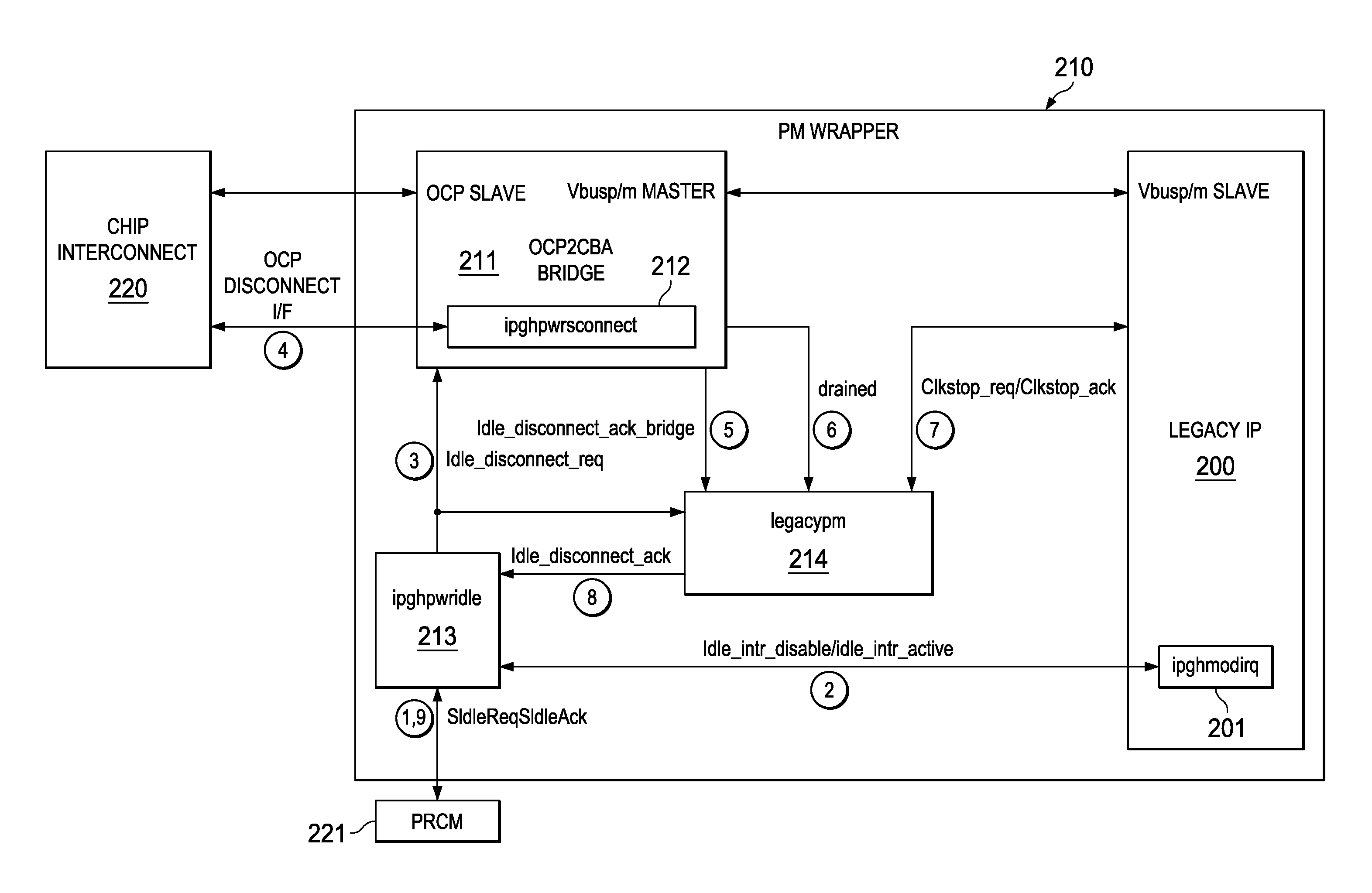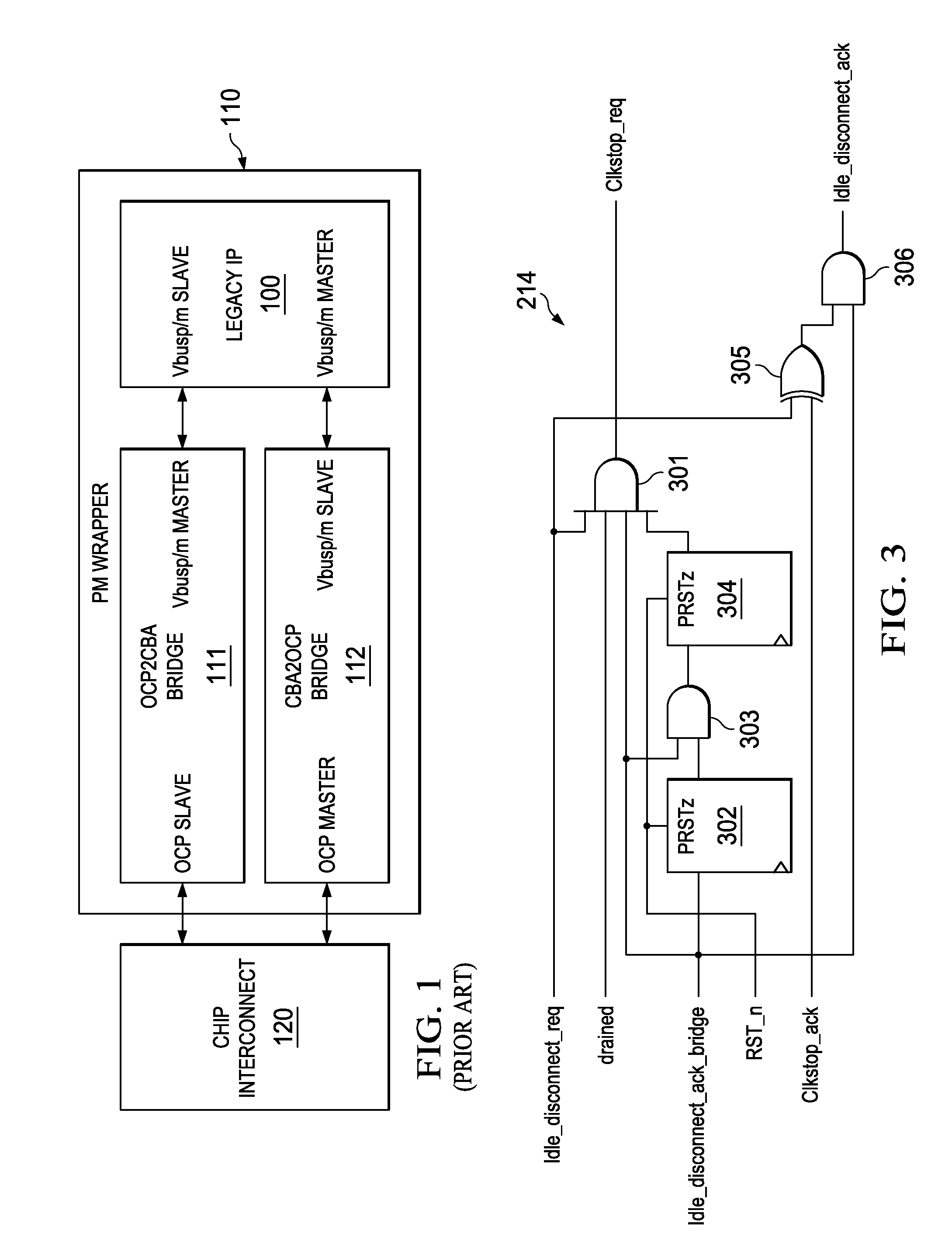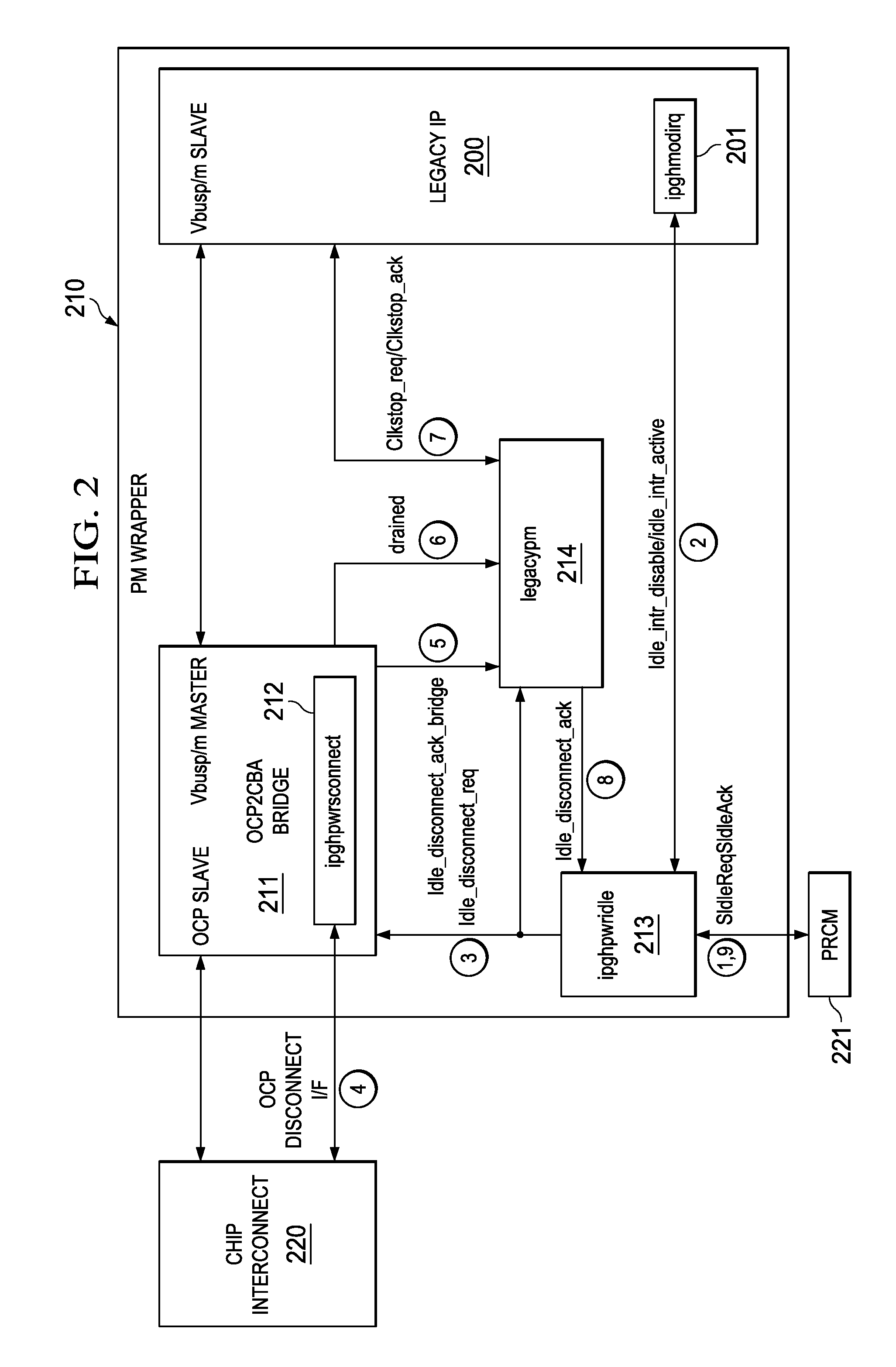Adapting legacy/third party IPs to advanced power management protocol
a power management protocol and legacy/third-party technology, applied in the field of power consumption control in integrated circuits, can solve the problems of integrating legacy/third-party ips with limited power management support in the next-generation system on-chip (soc) with advanced power management scheme, which is difficult, takes a lot of effort, and risks breaking the existing functionality of the ip
- Summary
- Abstract
- Description
- Claims
- Application Information
AI Technical Summary
Benefits of technology
Problems solved by technology
Method used
Image
Examples
first embodiment
[0033]FIG. 5 illustrates the hardware used in this FIG. 5 is similar to a combination of FIGS. 1 and 2. FIG. 5 includes CBA2OCP bridge 511 which is similar to CBA2OCP bridge 111 illustrated in FIG. 1. CBA2OCP bridge 511 further includes ipghprmconnect 512. FIG. 5 includes legacy IP 500 including ipghmodirq 501 similar to legacy IP 200 and ipghmodirq 201 illustrated in FIG. 2. FIG. 5 includes OCP2CBA bridge 521 including ipghpwrsconnect 522 similar to OCP2CBA bridge 211 and ipghpwrsconnect 212 illustrated in FIG. 2. FIG. 5 illustrates ipghprwidle 531 similar to ipghpwridle 213 illustrated in FIG. 2. FIG. 5 illustrates legacypm 532 similar to legacypm 214 illustrated in FIG. 5. FIG. 5 further illustrates ipghpwrstandby 533 used in the this STANDBY sequence as described below.
[0034]The STANDBY sequence in the first embodiment is as follows. These actions are marked by the circled numbers in FIG. 5. (1) PRCM 541 asserts SIdleReq. (2) Ipghpwridle 531 asserts idle_intr_disable to ipghmod...
second embodiment
[0037]FIG. 6 illustrates the hardware used in the STANDBY sequence. PM wrapper 610 includes: legacy IP 600 which further includes MMRs 601; master bridge 611 which further includes ipghpwrsconnect 612; and ipghpwrstandby 613. Master bridge 611 communicates with chip interconnect 620 and legacy IP 600. Ipghpwrsconnect 612 communicates with chip interconnect 220 via the OCP disconnect interface. Ipghpwrstandby 213 receives standby requests (Mstandby) from external PRCM 621 and supplies a wait signal (Mwait) to external PRCM 621. The standby mode signal (Mmr_standbymode) is generated by MMRs 601 within legacy IP 600.
[0038]The following sequence executes a STANDBY state. These actions are marked by the circled numbers in FIG. 6. (1) A software write to a standbymode register within MMRs 601 inside legacy IP 600 initiates the standby mode. (2) Ipghpwrstandby 613 asserts stby_disconnect_req to master bridge 611. (3) The OCP initiator interface is disconnected via inghpwrconnect 612. (4) M...
PUM
 Login to View More
Login to View More Abstract
Description
Claims
Application Information
 Login to View More
Login to View More - R&D
- Intellectual Property
- Life Sciences
- Materials
- Tech Scout
- Unparalleled Data Quality
- Higher Quality Content
- 60% Fewer Hallucinations
Browse by: Latest US Patents, China's latest patents, Technical Efficacy Thesaurus, Application Domain, Technology Topic, Popular Technical Reports.
© 2025 PatSnap. All rights reserved.Legal|Privacy policy|Modern Slavery Act Transparency Statement|Sitemap|About US| Contact US: help@patsnap.com



